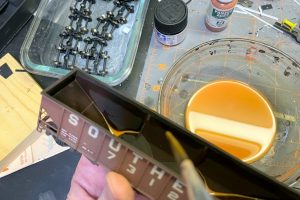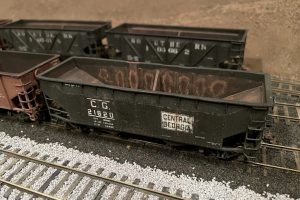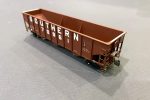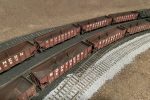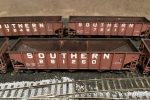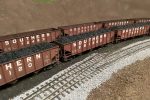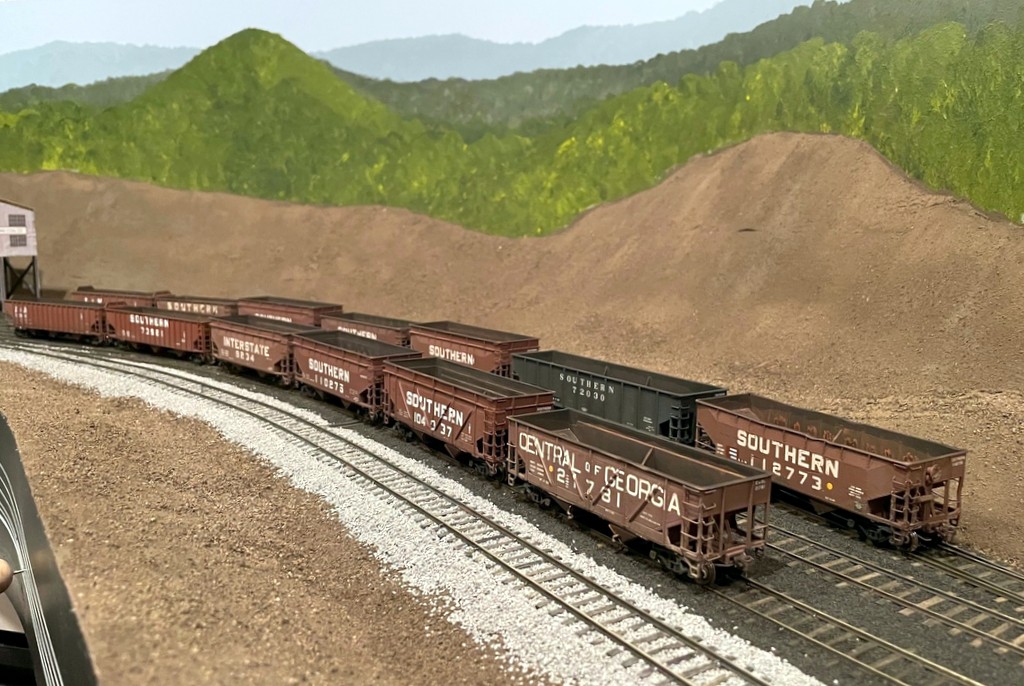
I’ve been on a hopper kick lately, so following close on the heels of the hopper class of January ’24 are these 13 cars comprising the hopper class of March ’24. They were actually built at the same time as the previous hoppers, but these were all custom paint jobs, so it took a while longer to paint and decal them. Among this class are several unique cars including two exact cars I’ve wanted to model since I first saw a picture of them. The first is Central of Georgia war-emergency rebuilt hopper 21781–there’s a photo of this car on railpictures.net at in a line of “yellow ball” hoppers Appalachia in 1978. The other car is Interstate 9234, a hand-me-down offset hopper of unknown origin with arched ends and an 18″ height extension to increase its capacity.

Most of the cars in this class represent old 50-ton cars relegated to “yellow ball” captive service between local mines and the huge coal transloader at Appalachia, VA where the St Charles Branch joined the Southern mainline. A few cars are regular offsets and war-emergency rebuilds including offset 112773 which spent a lot of time against a 100W lightbulb getting “beat up” to look the part! In addition to the Interstate car, there are four other cars with scratchbuilt height extensions including three offsets and a war-emergency rebuild, representing cars which received their height extensions in the mid-to-late ’70s.
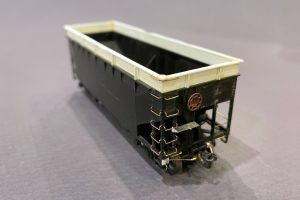
The class includes a couple unique Southern 70T cars as well. The first is a “standard” hopper from the large 70300-73749 class in its original black paint scheme. The first 3,000 or so cars were delivered in black and made it into the mid-’60s before being repainted. Another hopper, 73921, is a Pullman Standard PS3 70T hopper clone that’s been repainted in the more modern Southern scheme from its Railroad Roman scheme. This car, along with the L&N PS3 70T hopper in this set, were kitbashed from Atlas 70T 9-panel hoppers, one by me and one by Patrick Tillery. These were built before the Tangent model was released and have been sitting on the shelf for years–I’m happy to finally have them on the layout! Rounding out the class is an L&N PS3 50T hopper from an old Train Miniatures / Walthers kit representing a repainted car from the late ’60s.

The red cars were painted with either Tamiya NATO brown or a mix of Tamiya NATO brown and flat red–this mix will probably be my standard in the future, and I intend to vary the mixture to get variety in future cars. Never in my life have I done this many decals in one stretch. All told, there are more than 600 individual decals on these cars! Most of them are from K4 decals with a few Mask Island sets. The L&N hoppers are from a Great Decals set and a Curt Fortenberry set I got many years ago. Some Microscale small lettering and ACI labels rounded things out. Most received pretty heavy weathering since most represent non-interchange cars in their last years of service. I’m happy with how these cars turned out, and I’m happy I’ve got 9 more “yellow ball” hoppers to augment the fleet that’s been needing some help for a while.


